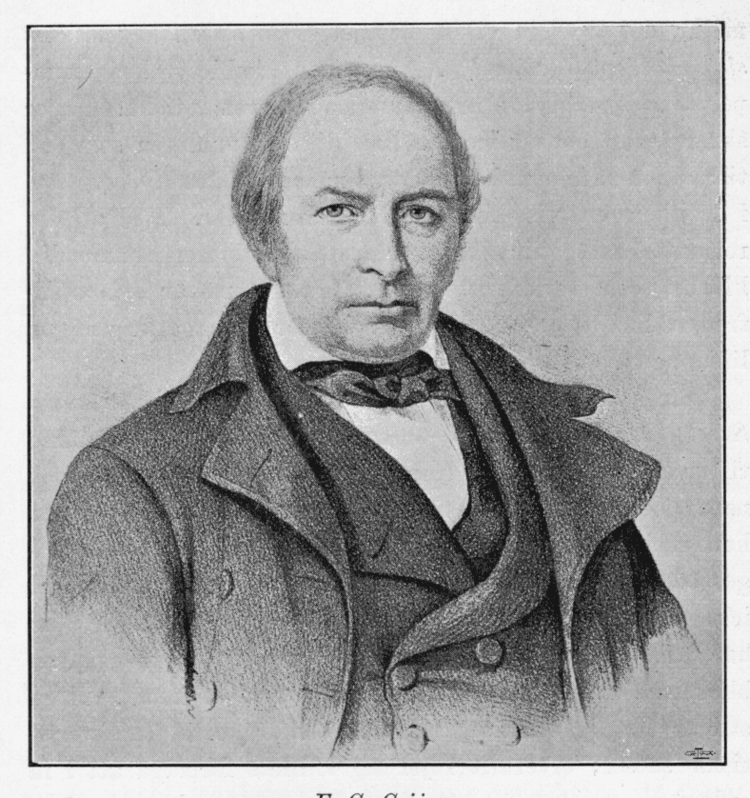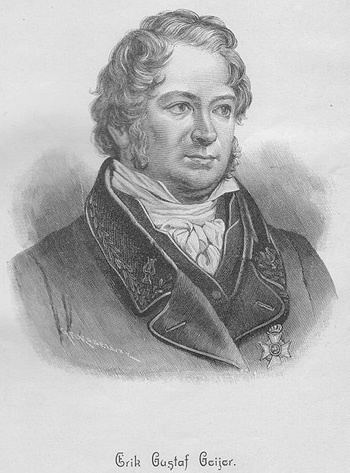Name Erik Geijer Role Writer | Education Uppsala University Books The History of the Swedes | |
 | ||
Born 12 January 1783 ( 1783-01-12 ) Ransater, Varmland Similar People Adolf Fredrik Lindblad, Johan Olof Wallin, August Soderman, Bengt Forsberg, Franz Berwald | ||
Erik gustaf geijer piano quartet in e minor 1825
Erik Gustaf Geijer (12 January 1783 – 23 April 1847) was a Swedish writer, historian, poet, philosopher, and composer. His writings served to promote Swedish National Romanticism. He also was an influential advocate of Liberalism.
Contents
- Erik gustaf geijer piano quartet in e minor 1825
- Erik gustaf geijer string quartet in b flat major 1846 47
- Biography
- Geijersgrden
- Selected works
- Chamber music
- Piano
- Songs
- Other vocal works
- Other works for mixed choir
- Other works for mens choir
- References

Erik gustaf geijer string quartet in b flat major 1846 47
Biography

Geijer was born at Geijersgården, his family's estate in Ransäter, Värmland. He was educated at the gymnasium of Karlstad, and then attended the University of Uppsala, where he earned his master's degree in 1806. In 1803 he had competed successfully for an historical prize offered by the Academy of Sciences at Stockholm. In 1809, he traveled in England. The year following, he became a lecturer in history at Uppsala, and in 1815 assistant to Eric Michael Fant. Succeeding Fant, Geijer was a professor of history from 1817 at Uppsala University where a statue now commemorates him. He was rector of Uppsala University during the years 1822, 1830, 1836 and 1843-1844. As a representative of the university, he was a member of the Church of Sweden clergy: 1828-30 and 1840-41. He was a member of the Swedish Academy (on seat 14) from 1824. In 1835, he became a member of the Royal Swedish Academy of Sciences.

Geijer was also a founding member of the Geatish Society (Swedish: Götiska förbundet). In the first issue of its periodical, Iduna, appeared Geijer's most famous poem The Viking (Swedish: Vikingen), which described the Viking as the heroic Norseman that many of us might imagine today and was a turning-point in the rehabilitation of Norse culture among the Swedish people. Geijer also collaborated with Arvid August Afzelius, in the three volume collection of Swedish folk-songs, Svenska folk-visor från forntiden (Stockholm, 1814–1816).

Geijer was also a noted historian, although he did not complete any one of the vast undertakings which he planned. Of the Records of Sweden (Swedish: Svea Rikes häfder), which were to have embraced the history of his native country from mythical ages to his own times, he finished only the introductory volume. His Svenska folkets historia (3 vols., 1832–36), which was intended to form one of the series of European histories edited by Leo and Ukert, was not carried beyond the abdication of Queen Christina (1654), the reason probably being the author's conversion to liberalism in history and politics. Incomplete as they are, these works are highly regarded contributions to Swedish history. His History of the Swedes down to Charles X was translated into English by Turner, with biographical introduction (London, 1845).
Geijer was entrusted the task of examining and editing the papers which Gustavus III had bequeathed to the University of Uppsala, with the stipulation that they were not to be opened for fifty years after his death. In fulfillment of his charge, Geijer arranged these papers in a work which appeared in 1843-45 under the title of Gusstaf III's efterlemnade papper, but they contained little or nothing of value.
Although he rose to fame as a nationalist author, Geijer's views changed during his lifetime. During the last ten years of his life, he took an active part in politics, and began to advocate social reform and Liberalism. Although his political writings possess great merit, the very versatility of his powers diverted him from applying them methodically to the complete elaboration of any one subject.
In 1846 increasing ill health forced him to resign his position as professor at Uppsala. He died in Stockholm. He left some personal memoirs, Minnen (Upsala, 1834). His collected works, Samlade Skrifter, with a bibliographic treatise by Teodblad (8 vols.), appeared at Stockholm (1873–75).
Geijersgården
Geijersgården is a historic mansion centrally located in Uppsala, north of the Uppsala University library. Geijersgården is named after Erik Gustaf Geijer, who lived there from 1837 to 1846. The main building was built between 1737-38. The estate gained its present appearance around 1850.
In 1934, the estate was taken over by Uppsala University and since 1965 has housed the Dag Hammarskjöld Foundation (Hammarskjöldfonden). The building was restored in the 1983 after a fire in which the building's western parts were badly damaged. The buildings are classified as historic properties under the Swedish Cultural Monuments Act (Kulturminneslagen).
Selected works
Chamber music
Piano
Songs
(to his own words unless otherwise stated)
